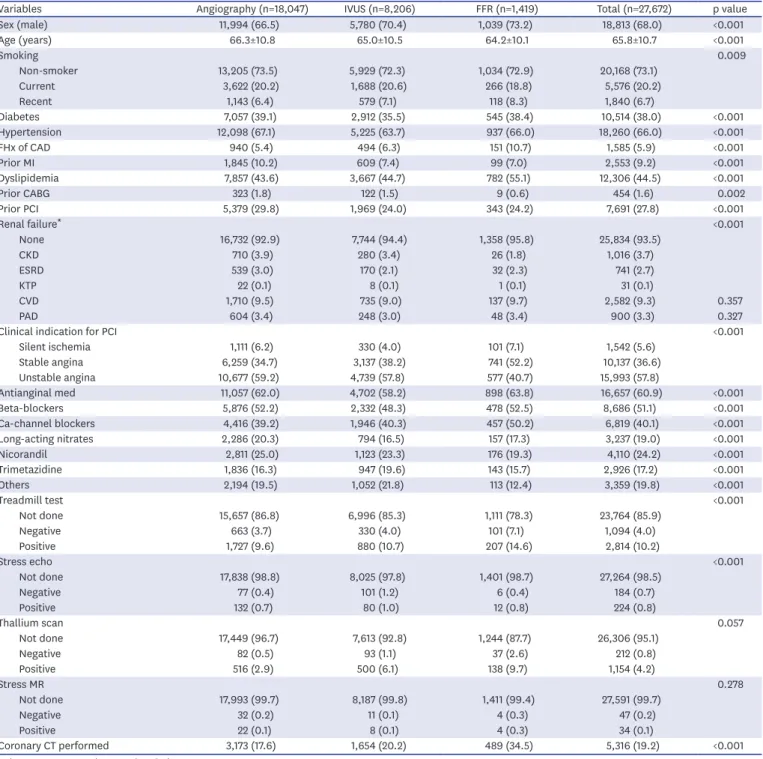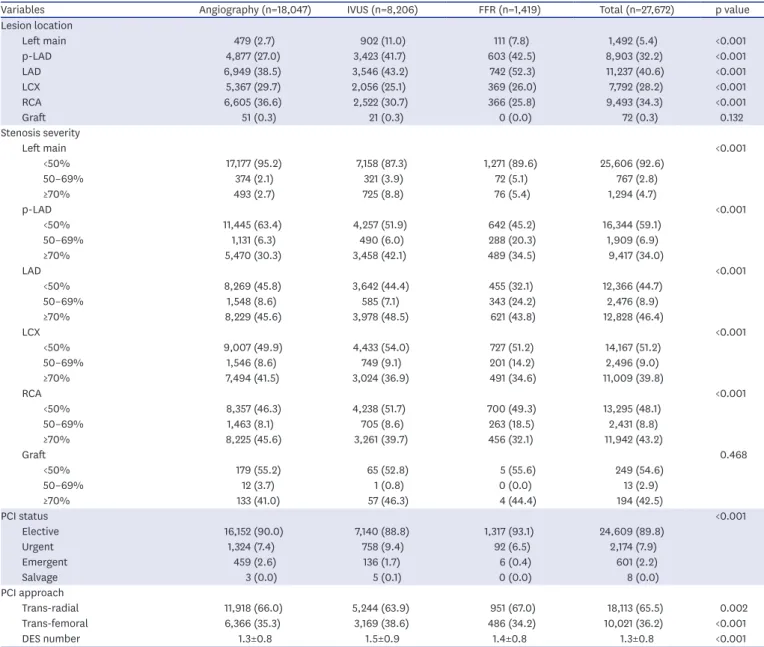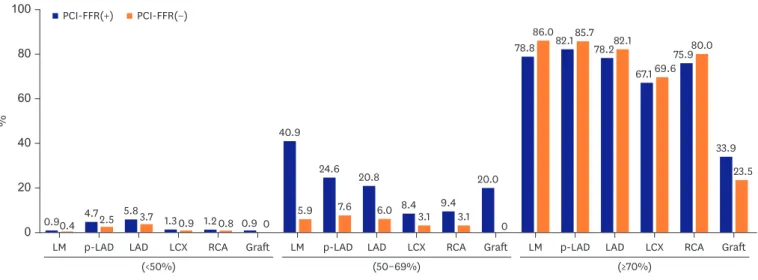ABSTRACT
Background and objectives: Intermediate coronary lesion that can be under- or over- estimated by visual estimation frequently results in stenting of functionally nonsignificant lesions or deferral of percutaneous coronary intervention (PCI) of significant lesions inappropriately. We evaluated current status of PCI for intermediate lesions from a standardized database in Korea.
Methods: We analyzed the Korean percutaneous coronary intervention (K-PCI) registry data which collected a standardized PCI database of the participating hospitals throughout the country from January 1, 2014, through December 31, 2014. Intermediate lesion was defined as a luminal narrowing between 50% and 70% by visual estimation and then compared whether the invasive physiologic or imaging study was performed or not.
Results: Physiology-guided PCI for intermediate lesions was performed in 16.8% for left anterior descending artery (LAD), 9.8% for left circumflex artery (LCX), 13.2% for right coronary artery (RCA). PCI was more frequently performed using intravascular ultrasound (IVUS) than using fractional flow reserve (FFR) for coronary artery segments (27.7% vs.
13.9% for LAD, 32.9% vs. 8.1% for LCX, and 33.8% vs. 10.8% for RCA). In accordance with or without FFR, PCI for intermediate lesions was more frequently performed in the hospitals with available FFR device than without FFR, especially in left main artery (LM), proximal LAD lesion (40.9% vs. 5.9% for LM, 24.6% vs 7.6% for proximal LAD).
Original Article
Jin-Ho Kim , MD 1 , Woonggil Choi , MD 1 , Ki-Chang Kim , MD 1 ,
Chang-Wook Nam , MD 2 , Bum-Kee Hong , MD 3 , June-Hong Kim , MD 4 , Doo Soo Jeon , MD 5 , Jang-Whan Bae , MD 6 , Sang-Hyun Kim , MD 7 , Keon-Woong Moon , MD 8 , Byung-Ryul Cho , MD 9 , Doo Il Kim , MD 10 , and Jae-Sik Jang , MD 11
1
Department of Cardiology, Konkuk University School of Medicine, Chungju, Korea
2
Division of Cardiology, Department of Internal Medicine, Keimyung University Dongsan Hospital, Daegu, Korea
3
Division of Cardiology, Yonsei University College of Medicine, Gangnam Severance Hospital, Seoul, Korea
4
Department of Cardiology, Pusan National University Yangsan Hospital, Busan, Korea
5
Department of Cardiology, The Catholic University of Korea, Incheon St. Mary's Hospital, Incheon, Korea
6
Department of Internal Medicine, Chungbuk National University College of Medicine, Cheongju, Korea
7
Division of Cardiology, Department of Internal Medicine, Seoul National University College of Medicine, Seoul Metropolitan Government-Seoul National University Boramae Medical center, Seoul, Korea
8
Division of Cardiology, The Catholic University of Korea, St.Vincent's Hospital, Suwon, Korea
9
Division of Cardiology, Department of Internal Medicine, Kangwon National University School of Medicine, Kangwon National University Hospital, Chuncheon, Korea
10
Division of Cardiology, University of Inje College of Medicine, Inje University Heaundae Paik Hospital, Busan, Korea
11



